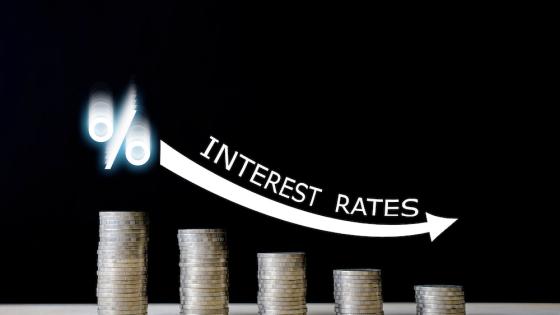Between 2001 and the end of 2005, the Standard and Poor’s/Case-Shiller 20 City Composite House Price Index rose by 46% in real terms. By the first quarter of 2009 the index had dropped by about one-third before stabilising. The volatility of the Federal Housing Finance Agency (FHFA) repeat-sales price index was less extreme but still severe. That index rose by 53% in real terms between 1996 and 2006 and then fell by 10% between 2006 and 2008. As many financial institutions had invested in or financed housing-related assets, the price decline helped precipitate enormous financial turmoil.
Much academic and policy work has focused on the role of interest rates and other credit market conditions in this great boom-bust cycle.
- One common explanation for the boom is that easily available credit, perhaps caused by a “global savings glut,” led to low real interest rates that boosted housing demand (Himmelberg et al. 2005, Mayer and Sinai 2009, Taylor 2009).
- Others have suggested that easy credit market terms, including low down payments and high mortgage approval rates, allowed many people to act at once and helped generate large, coordinated swings in housing markets (Khandani et al. 2009).
Those easy credit terms may have been a reflection of agency problems associated with mortgage securitisation (Keys et al., 2009, 2010, Mian and Sufi, 2009 and 2010, Mian et al. 2008).
If correct, these theories would provide economists with comfort that we understood one of the great asset market gyrations of our time; they would also have potentially important implications for monetary and regulatory policy. But economists are far from reaching a consensus about the causes of the great housing market fluctuation. For example, Shiller (2003, 2006) long has argued that mass psychology is more important than any of the mechanisms suggested by the research cited above.
Re-evaluating the missing link
Motivated by this question, we re-evaluate the link between housing markets and credit market conditions, to determine if there are compelling conceptual or empirical reasons to believe that changes in credit conditions can explain the past decade’s housing market experience.
For credit markets to be able to explain the large recent price movements, the impact of credit markets must be large and there must have been a substantial change in credit market conditions during the periods when housing prices were booming and busting. On the surface at least, both of these conditions appear to be met – the real long rate dropped substantially during the housing boom.
- Between 1996 and 2006, the real ten-year Treasury yield fell by 120 basis points, and it declined by an even larger 190 basis points from 2000 to 2005, when housing prices boomed the most. In addition, the static version of Poterba’s (1984) asset market approach to house valuation suggests that the impact of interest rates on house prices is quite large.
- Recent research implies a semi-elasticity of housing prices with respect to real rates of over 20 (Himmelberg et al. 2005), meaning that a 100 basis point decline in rates should be associated with roughly a 20% increase in price1.
The combination of a nearly 200 basis-point decline in real interest rates and semi-elasticity of 20 implies that the changes in real rates can account for the bulk of the 50%-plus boom in prices experienced in the aggregate US data (Himmelberg et al. 2005, Mayer and Sinai 2005).
But there are two reasons to question this conclusion. Our own work amends the standard house price model of Poterba (1984) and identifies various reasons why interest rates can have a much smaller impact on house prices than the traditional calculations suggest (Glaeser et al. 2010). Particularly important factors are the combination of mean reversion in interest rates and normal household mobility.
If people expect to move in the future, low interest rates today will not lead them to bid up prices so much now because they realise they might have to sell later at a lower price when rates are higher. The option to prepay also weakens the link between current interest rates and house prices for the same reason. Rates also should have little or no impact on prices in elastically supplied markets as shown in Glaeser et al. (2008).
Finally, if people are credit-constrained, lower rates today need not lead to higher prices. After all, if the marginal buyer cannot take advantage of those lower rates, they should not affect the buyer’s valuation of a home. Taken together, we show that these factors can reduce the predicted impact of interest rates on home prices by about two-thirds, bringing it down to 6 or 8 from previous conclusions of around 20.
History lessons
The second reason to question the conclusion that low real rates can explain the recent large housing market gyrations is that the historical data are consistent with a much weaker connection. The simple bivariate relationship between log house prices and the real long rate, as measured by the 10-year Treasury rate corrected for inflation expectations, is plotted in Figure 1. These data imply that a 100-basis-point fall in rates is associated with barely a 7% increase in house prices, as measured by the FHFA index between 1980 and 2008. Larger price effects are found by restricting the sample to years after 1984, but they do not survive inclusion of a simple national time trend.
As theory suggests, we find that real rates have their strongest impact when rates are low and in markets where housing supply is relatively inelastic. Our results support the insight from Himmelberg et al. (2005) that price impacts should be stronger at lower initial rates of interest, but even when rates change from a low base, a 100-basis-point fall in real rates is associated with only an 8% rise in real house prices, independent of trend.
While there are good reasons to question the empirical authority of less than 30 years of time-series data, these results are quite in line with the predictions of our expanded model. Both theory and data suggest that lower real rates cannot account for more than one-fifth of the boom in house prices.
If we ever are going to understand the US housing boom and bust, we will have to turn to other factors to complement the role of interest rates. Other conditions certainly were changing in the mortgage markets. There was a massive surge in mortgage applications during the boom, but our preliminary investigation did not find a similarly large increase in approval rates or loan-to-value ratios. That these factors were not trending with house prices suggests they cannot explain the boom or its subsequent bust. However, it is very difficult to identify what was happening to the marginal borrower. It seems likely that less creditworthy people were able to become homeowners, and if so, that could help explain what happened. Yet there is much more speculation whizzing around academic and policy circles that there are hard data and convincing analyses. It is clear that more research is urgently needed in this area.
Conclusions
We doubt that any single or simple story can explain the movement in house prices, especially over the past decade. While our analysis indicates that one plausible explanation of that boom, easy credit conditions – and low interest rates alone – cannot account for most of what happened to prices, we are not able to offer a compelling alternative hypothesis. Low rates certainly could have combined with other credit market conditions, including overly optimistic expectations about prices by prospective buyers, to drive the boom. In particular, we suspect that Case and Shiller (2003) are correct and the over-optimism illustrated by their surveys of recent home buyers was critical, but this just pushes the puzzle back a step. Why were buyers so overly optimistic about prices? Why did that optimism show up during the early and middle years of the last decade, and why did it show up in some markets but not others? Irrational expectations are surely not exogenous, so what explains them?
Finally, our results should not be interpreted as a defence of monetary policy as being either wise or appropriate. Housing is only part of the economy, and monetary policy should be evaluated in a broader context. Even within the housing sector, it is possible that a sharp rise in the federal funds rate could have substantially limited price increases by interacting with buyers’ expectations during the boom. But this speculation only highlights the need for more research on the broader issue of buyers’ expectations.
References
Case, Karl E and Robert J Shiller (2003), “Is There a Bubble in the Housing Market?”, Brookings Papers on Economic Activity, 2:299-342, Fall.
Glaeser, Edward L, Joshua D Gottlieb, and Joseph Gyourko (2010), “Can Cheap Credit Explain the Housing Bubble?”, NBER Working Paper 16230, July.
Himmelberg, Charles, Christopher Mayer, and Todd Sinai (2005), “Assessing High House Prices: Bubbles, Fundamentals and Misperceptions”, Journal of Economic Perspectives, 19(4):67-92.
Keys, Benjamin J, Tanmoy Mukherjee, Amit Seru, and Vikrant Vig (2009), “Financial Regulation and Securitization: Evidence from Subprime Mortgage Loans”, Journal of Monetary Economics, 56(5):700-720, July.
Khandani, Amir, Andrew W Lo, and Robert C Merton (2009), “Systemic Risk and the Refinancing Ratchet Effect”, NBER Working Paper 15362, September.
Mayer, Christopher and Todd Sinai (2005), “Bubble Trouble? Not Likely”, Wall Street Journal editorial, 19 September.
Mian, Atif and Amir Sufi (2009), “The Consequences of Mortgage Credit Expansion: Evidence from the US Mortgage Default Crisis”, Quarterly Journal of Economics, 122(4):1449-1496, November.
Mian, Atif and Amir Sufi (2010), “Household Leverage and the Recession of 2007 to 2009.” NBER Working Paper 15892, April.
Mian, Atif, Amir Sufi, and Francisco Trebbi (2008), “The Political Economy of the US Mortgage Default Crisis”, National Bureau of Economic Research Working Paper No. 14468, November.
Poterba, James (1984), “Tax Subsidies to Owner-Occupied Housing: An Asset-Market Approach”, Quarterly Journal of Economics, 99(4):729-752, November.
Shiller, Robert J (2005), Irrational Exuberance, 2nd Edition, Princeton University Press.
Shiller, Robert J (2006), “Long-Term Perspectives on the Current Boom in Home Prices.” The Economists’ Voice, 3(4):4.
Taylor, John B (2009), Getting Off Track: How Government Actions and Interventions Caused, Prolonged, and Worsened the Financial Crisis, Hoover Institution Press.
1 The semi-elasticity is defined as the derivative of the logarithm of housing prices with respect to the real interest rate.





